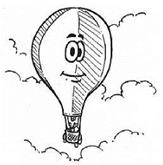How Much Will It Cost?
There’s a dang good reason that you don’t see as many helicopters taking off and landing from your local airport on a sunny summer day as you do airplanes and gliders: Helicopters are too expensive for almost anyone to afford. In fact, pound for pound, helicopters are undoubtedly the most expensive form of aviation around—not counting Pentagon-funded military aviation, of course.
Even the smallest helicopter model now in widespread use, the two-seat Robinson R-22, will set you back almost $160,000 fresh off the factory floor. Its slightly larger cousin, the four- seat R-44, sells for more than $280,000. For true rotor-heads, nothing is going to get between them and the helicopters they love. But the “inexpensive” R-22 boasts a top safe speed of less than 100 miles per hour, far slower than any airplane being produced today.
Helicopter flying lessons aren’t cheap either. The price of the Robinson R-22 plus an instructor for an hour runs $170 or more. Rental of a truly powerful helicopter, a Bell 206 Jet Ranger, costs $625 per hour, and that’s an instructor. In addition to the cost of the helicopter and instructor, the costs that we outline in Chapter 13, “Getting Off the Ground: Becoming an Airplane Pilot,” apply to helicopter students as well.
 |
Still, there’s something to be said for an aircraft that’s capable of landing almost anywhere it’s legal and safe to land, from a deserted beach to a mountain meadow to a desert mesa. That’s the capability that helicopter pilots love, not to mention the challenge of flying a craft that is among the most difficult in the sky to fly really well.
Chapter 11
Up, Up, and Away: Hot-Air Balloons
|
|
In This Chapter
, V Ballooning and a Greek philosopher ^ From liftoff to landing >- Reading the wind
^ The surging popularity of hot-air ballooning V Helium balloons circle the globe
Balloonists became the first true aviators when the Montgolfier brothers invented the hot-air balloon in the eighteenth century. From the day the Montgolfiers staged their balloon demonstration for Louis XVI and Queen Marie Antoinette to the late nineteenth century, when people tried to motorize them with primitive gasoline engines, balloons were literally the only way to fly. (For a review of the role of balloons in the history of flight, turn to Chapter 1, “The Earliest Aviators.”)
With the turn of the twentieth century and the Wright brothers’ invention of the airplane, however, interest in balloons faded. Only recently has ballooning—and its close cousin, blimp flying—experienced a renaissance, thanks in part to advertisers, a historymaking world-circling flight by a brave team of aeronauts in 1999, and a group of flyers in a field outside Albuquerque, New Mexico.












